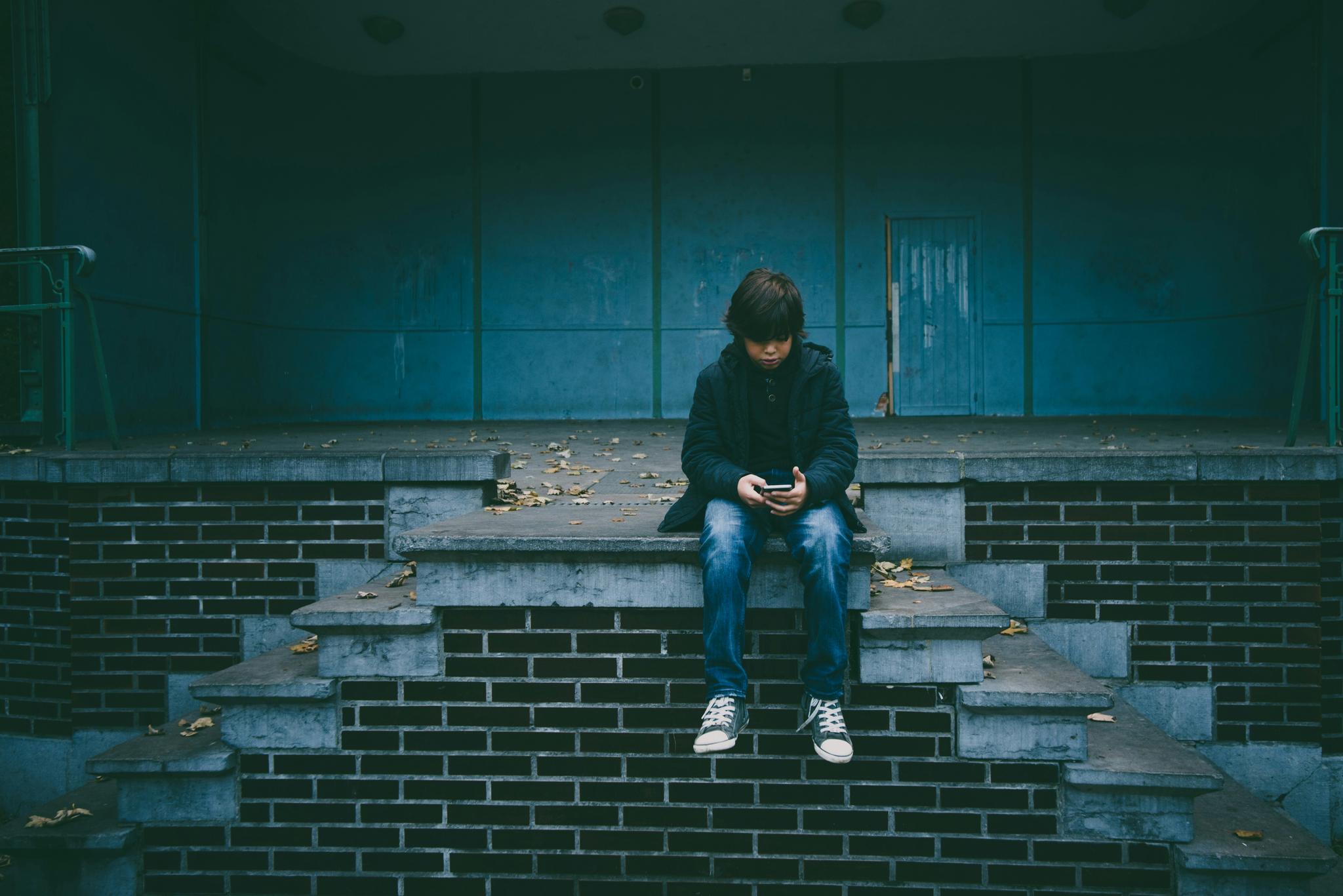What is Smartphone Addiction and How to Deal With it

What is Smartphone Addiction?
Smartphone addiction is the inability to control your smartphone usage to the point that it begins harming your well-being. The term refers to a behavioral disorder characterized by an excessive and compulsive reliance on mobile devices. This addiction is often measured by the frequency of device usage and the total duration of online activity within a given timeframe.
According to a survey done by reviews.org in May 2023, a whopping 56.9% of Americans admitted to being addicted to their smartphones, up from 51% just the year before. And these are just the ones who admitted to being addicted. So smartphone addiction is more of a problem than you think; even you reading this might be addicted too but refuse to admit it. So what are the symptoms—the clear, undeniable signs that you're a smartphone addict?
Symptoms of Smartphone Addiction
Here are some common symptoms of smartphone addiction:
Preoccupation With The Smartphone
Constantly thinking about the smartphone, anticipating its use, and feeling anxious or restless when it is not accessible.
Excessive Use
Spending increasing amounts of time on the smartphone, often at the expense of other activities such as work, school, hobbies, or social interactions.
Loss Of Control
Difficulty in controlling or limiting smartphone use; unsuccessful attempts to cut down or control usage; and experiencing cravings or withdrawal symptoms when unable to use the smartphone.
Neglecting Responsibilities
Neglecting or performing poorly in work, school, or personal obligations due to excessive smartphone use
Interference with Relationships
Neglecting social interactions, spending less time with family and friends, and experiencing conflicts or difficulties in relationships due to excessive smartphone use.
Escapism
Using the smartphone as a way to escape from negative emotions, problems, or real-life situations.
Neglecting Self-Care
Failing to take care of personal hygiene, sleep, exercise, or other self-care activities due to excessive smartphone use.
Sleep Disturbances
Excessive smartphone use/using phones late at night or in bed leads to difficulty falling asleep, disrupted sleep patterns, or insomnia.
Impact On Physical Health
Experiencing physical symptoms such as eye strain, headaches, neck or back pain, and poor posture due to excessive smartphone use.
Neglected Interests And Hobbies
Losing interest in previously enjoyed activities, hobbies, or socializing in favor of spending more time on the smartphone
It's important to note that experiencing one or two of these symptoms occasionally doesn't necessarily indicate smartphone addiction. However, if these symptoms persist and significantly interfere with daily life, it may be a sign of a more severe issue that requires attention and potential intervention.
Negative Impacts Of Smartphone Addiction
Here are some of the negative impacts of smartphone addiction: Consequences can go from not-so-bad to pretty severe.
Impaired Academic Or Work Performance
Excessive smartphone use can lead to decreased productivity and performance in academic or work settings. Constant distractions and the inability to focus can result in missed deadlines, poor grades, or job-related issues.
Strained Relationships
Smartphone addiction can strain personal relationships. Excessive smartphone use can lead to reduced face-to-face interactions, a lack of quality time with loved ones, and decreased communication and emotional connection.
Sleep Disturbances
The use of smartphones, especially before bedtime, can disrupt sleep patterns. The blue light emitted by smartphones can suppress the production of melatonin, a hormone that regulates sleep, leading to difficulty falling asleep and poor quality sleep.
Social Isolation
Excessive smartphone use can contribute to social isolation. Spending more time on smartphones(especially Social media apps or Games) and less time engaging in real-life social interactions can lead to feelings of loneliness, alienation, and a decreased sense of belonging.
Physical Health Problems
Prolonged smartphone use can lead to physical health issues. Poor posture while using smartphones can cause neck and back pain. Eye strain, dry eyes, and blurred vision are also common problems associated with excessive screen time.
Risky Behaviors
Excessive smartphone use, particularly while driving or crossing the street, can increase the risk of accidents and injuries. It can also lead to a lack of awareness of one's surroundings, increasing vulnerability to accidents and dangerous situations.
Psychological Disorders
Chronic smartphone use has been proven to change the brain's reward circuits. One of the primary neurotransmitters affected is gamma-aminobutyric acid (GABA). GABA is a key neurotransmitter in addiction, affecting reward and reinforcement. It produces calming and euphoric effects and regulates fear and anxiety. Research has shown that chronic phone use can increase or decrease GABA levels, and GABA disturbances are warning signs of addiction.

How To Deal With Smartphone Addiction
Awareness
The first step in your journey is for you to recognize and acknowledge that you have a smartphone addiction. Understand the negative impacts it has on your life and well-being. From there, it is easier to monitor and cut back on smartphone use.
Set Limits On Your Phone's Use.
Setting limits on your phone's use is the next step. You can take actions like not using your smartphone after 10 p.m. This will help you gradually get used to not being with your phone, and it'll also help you be intentional or aware of your phone use.
The first few days, or maybe even weeks, of you doing this might be extremely hard because it's a habit you've built over a period of years, but eventually, it'll get easier.
Practice Mindful Smartphone Use
Be mindful of your smartphone use. Before picking up your phone, ask yourself if it's necessary or if you're using it out of habit. Engage in activities intentionally and avoid mindless scrolling.
Create Phone-free Zones
Designate specific areas, such as your bedroom or mealtime, where smartphones are not allowed. This helps create boundaries and encourages present-moment awareness. Also, avoid using your smartphone in your bedroom; it'll go a long way.
Minimize Unimportant Notifications
Notification buzzes and sounds are one of the main reasons we pick up our phones so much. So restrict apps that send trivial notifications from sending them. This will help reduce the urge or desire for you to pick up your phone, which is unnecessary.
Find Alternative Activities To Fill Your Time
Explore other fulfilling activities that don't involve smartphone use. Engage in hobbies, spend time outdoors, exercise, read books, or socialize face-to-face with friends and family.
Establish Tech-free Time
Set aside dedicated periods of time each day when you disconnect from your phone completely. You can take this a step further by using this time for hobbies, physical activities, or quality interactions with others.
Seek Support
If you find it challenging to reduce smartphone use on your own, consider seeking support from friends, family, or even professional help. Support groups or counseling can provide guidance and accountability.
Utilize Digital Well-being Tools
Many smartphones now offer digital well-being features that track and manage your screen time. Use these tools to set limits, monitor usage, and enforce breaks.
Get Professional Help If Needed
If you can't seem to break free from your smartphone addiction on your own, then it's best to seek professional help. Don't be afraid or shy about reaching out to health professionals.
In conclusion, breaking free from smartphone addiction is possible; it doesn't matter if you've been addicted for the past decade. Through setting goals and limits, creating phone-free zones, and practicing mindfulness, you can break free.
By regaining control over smartphone use, we can live a more balanced and fulfilling life.

Post a comment